
Since the 1920's, Hollywood celebrities have sent the message: sun tans are beautiful. In the 1950's and 60's, the beach movies starring Annette Funicello and Frankie Avalon featured attractive tanned teens. Actor George Hamilton has promoted himself as the sun tan poster boy, goading a generation to pursue the "healthy" tan. Since those carefree days, research and experience have shown that years of sun exposure can have decidedly unhealthy effects on the skin.

What does the sun do to the skin?
There are two types of ultraviolet radiation that bombard our skin daily. UVB causes sun burns. Repeated exposure to UVB rays damage collagen production resulting in fine and deep wrinkles. Check out the before and after of fair-skinned actor Robert Redford. Lack of sunscreen on movie sets and on the ski resorts at Sundance have taken the toll. Most of his weathered look is a direct result of UV damage from his early years.
Actress Brigitte Bardot offers another example of the long-term effects sun exposure. This saucy French actress starred in many films in the 1960's. The photo on the right from the mid-1980's shows the wrinkling from sun exposure that many mistakenly assume is a natural part of aging.

Unlike many American actresses, Bardot has opted not to undergo face-lifts and other facial rejuvenating treatments that are currently available in the office of a dermatologist. UVA, "tanning" rays, have been for years considered a safe form of radiation. Known to not cause burns, this is the light used in tanning booths. Current research now shows that UVA rays are also responsible for wrinkles, pigmentation and other cosmetically challenged changes.

Actress Pamela Anderson is shown tanned from the 1996 action flick "Barb Wire." While considered the fashion at the time, she was setting herself up for not-so-pretty premature wrinkling.

One can project the detrimental effect of this excessive sun exposure with a photo of Lee's predecessor Brigitte Bardot. Anderson from the 1990's resembles Bardot in the 1960's.
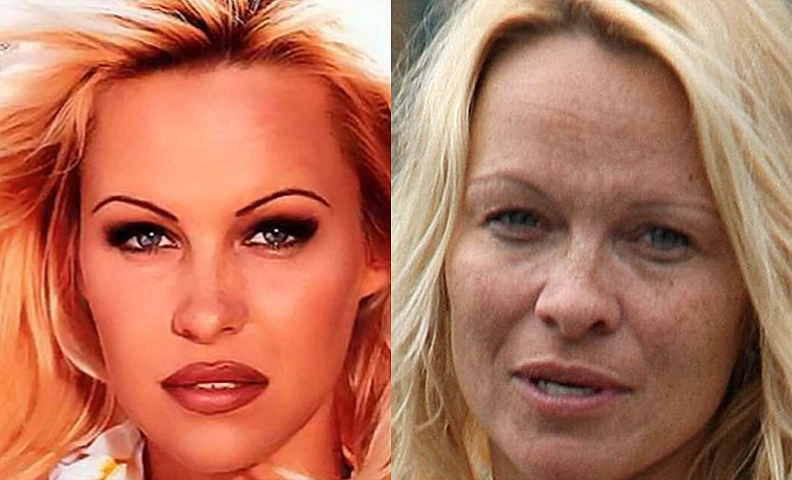
In a short time, Anderson already shows the wrinkling and discoloration that tanning, not even burning, can cause. Or undergo repeated, painful expensive cosmetic procedures in an attempt to remain wrinkle-free. Isn't a little preventive medicine an easier choice? Sun burns and and even tanning booths are unhealthy and should be avoided by wearing wide-brim hats and repeated sunscreen use.
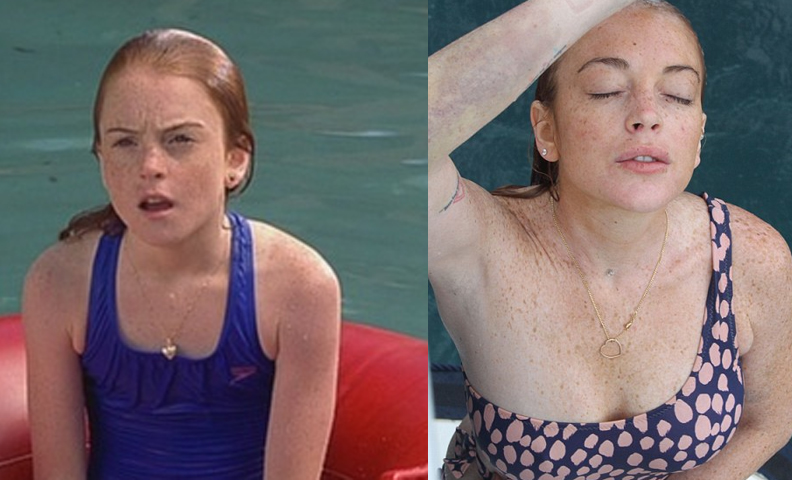
Lindsay Lohan shows off sun burn souvenirs
Ah, the sun. So healthy. And on a summer day without sunscreen, the skin reddens and bubbles like a simmering fondue. Adding aesthetic insult to injury, a blistering sun burn leaves a cutaneous reminder: sun spots. Lohan, a fair-skinned redhead, got a lot of sun exposure when shooting movies like "The Parent Trap." As an adult, it's not just her bathing suit that's spotted.
Usually seen on the shoulders, chests, or backs, these dark freckle-like lesions are not themselves pre-cancerous. But they are a direct sign of sun damage and should alert one to keep a close eye on these areas for new or changing growths. In the entertainment business, preserving a youthful look is paramount. For those that are bothered by their appearance, lasers and freezing treatments can effectively fade sun spots.

Drew Barrymore reveals one of the most common skin conditions to plague adult women: Melasma. These tan patches on the cheeks and forehead sometime happen to pregnant women, so a lay label is "the mask of pregnancy." However, since melasma results from a combination of estrogen hormone, genetics, and sun exposure, it is just as routinely seen in women on birth control pills or from a non-pregnant woman's own natural estrogen hormone. Though not dangerous, it is a significant cosmetic issue and is slow to respond to treatment. Therapy consists of topical creams that slowly fade the pigment, such as Azelex (azelaic acid), retin-A, hydroquinone, kojic acid, and glycolic acid. Often more than one of this salves are needed together to reduce the color. These prescription and/or over-the-counter creams can have potential side effects, have to be used for months, and stringent use of sunscreens is crucial.
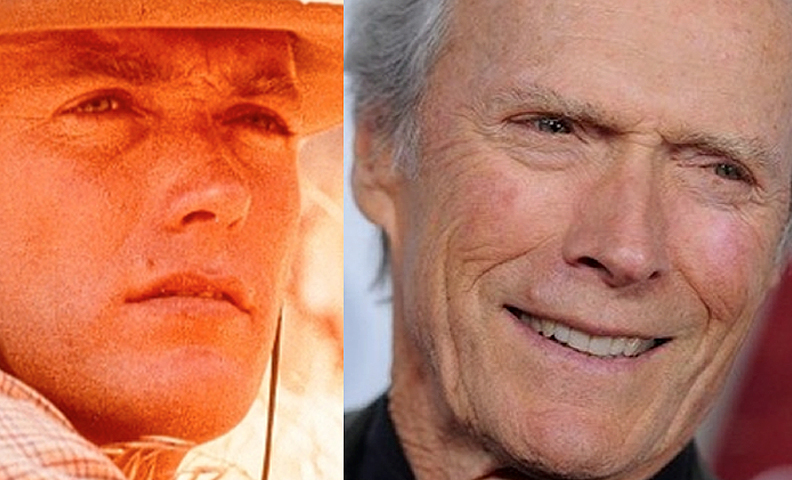
Go ahead, make his day: Clint's telangiectasias
In one of his Westerns, actor Clint Eastwood's character is left to die in the desert sun and develops a doozy of a sunburn. Eastwood himself shows the effects of a life of sun exposure. In addition to the furrows and wrinkles, he has numerous telangiectasias. Before trying to say this daunting derm-term three times fast, we will translate it: dilated blood vessels. Caused by both hereditary and sun damage, they become more prominent with exercise and alcohol use. These pesky red lines can be reduced with lasers specifically tuned to zap them. Treatments do not typically produce scarring and result in little downtime. This gives "Dirty Harry" more time to make the world safe for multiplex venturing public.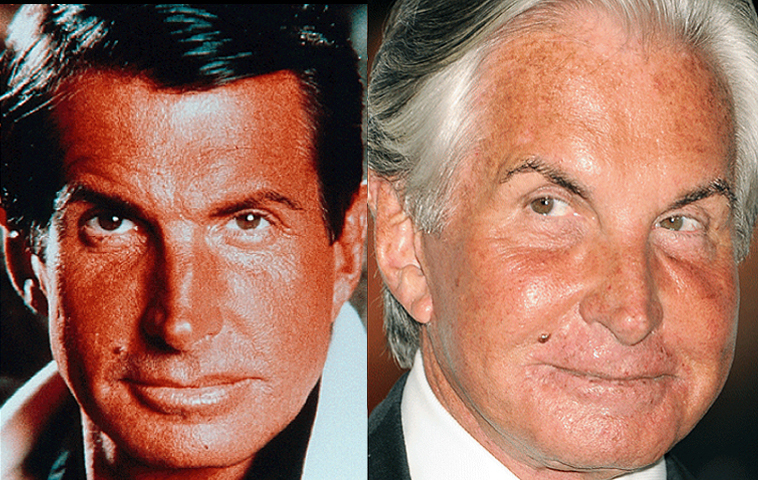
All of the sun damage changes shown to this point are cosmetic, a drag, but not dangerous. But the bright light of the sun casts an even darker shadow: Skin cancer. Getting back to one of the celebs that jump started this tanning trend: George Hamilton, or as we refer to him here at Skinema.com: George Hamil-tan. To our knowledge, despite years of UV bombardment, Hamilton has not admitted to having skin cancer.
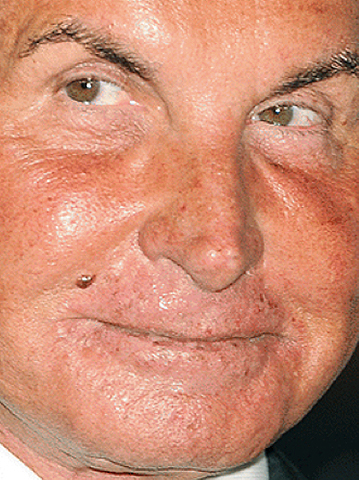
Recently, Hamilton reported that he had been treated for pre-cancerous facial spots. Considered precursors to non-melanoma skin cancer, docs call these rough scaly spots actinic keratoses or AKs. Note small scaly bumps around Hamilton's mouths. Initially, these lesions respond to liquid nitrogen freezing treatments.
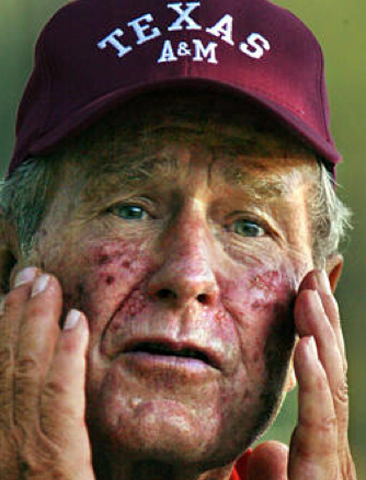
Eventually, more drastic measures may taken. Check out this un-retouched AP image of former President Herbert Walker Bush. That's W. Bush's dad, for the Millennial set. He's midway through a round of golf, circa summer 2002. He's also midway through a treatment course with a topical chemotherapy cream that causes precancerous bumps to turn red and flake off. Known as Efudex, it is a step that is not taken lightly. After a few weeks of appearing scabby and feeling crabby, this rigorous treatment can clear away scores of sun damaged cells.
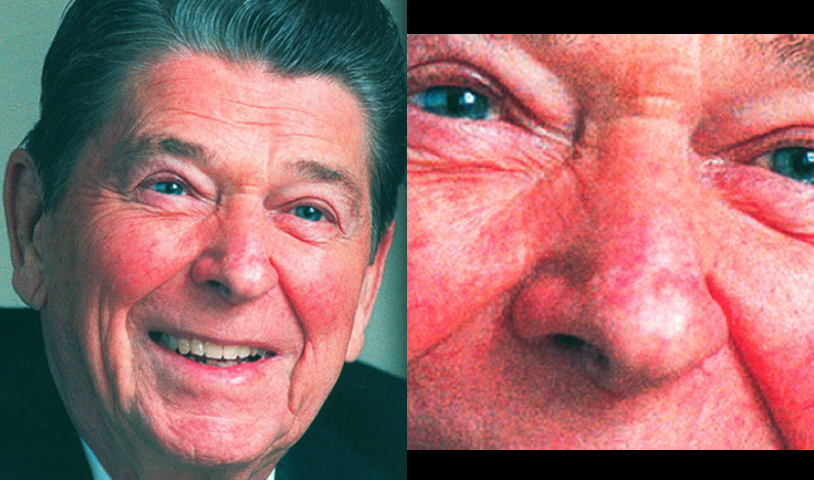
Prequel movies eventually make way for the real thing: Skin cancer. In the 1980's, former actor and US President Ronald Reagan underwent the well-publicized removal of a basal cell carcinoma (BCC). Note the surgical scar on his nose. While dark black and irregularly shaped melanoma tends to get all the press, BCC is actually much more common, yet usually less worrisome. Melanoma can potentially spread to lymph nodes and metastasize. BCC tends to gradually get larger locally but otherwise stay put. TV personality Regis Philbin, actress Elizabeth Taylor and former President Bill Clinton all underwent treatment for basal cell carcinoma.
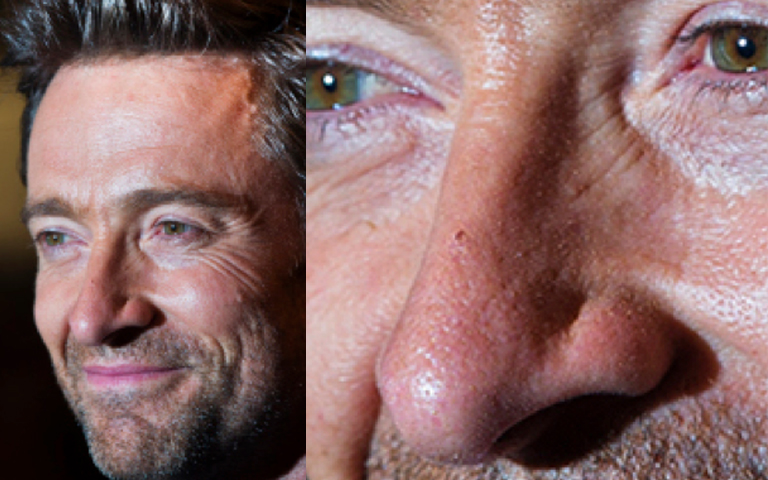
Followers of the X-Men franchise got a scare when screen sensation Hugh Jackman revealed that he had been treated for cancer. Before fans could get (Les) Miserable, Jackman reassured all that he had also undergone successful skin surgery to remove basal cell skin cancer (BCC) from his nose. Probably the trickiest aspect of BCC is its subtle appearance. In these high res images taken at the Toronto Film Festival in September 2013, note slight redness and crust on Hugh’s nasal bridge. Sometimes BCC can look shiny or pearly and may display thin scarlet blood vessels. If a skin lesion fails to heal over the course of weeks or months, consider BCC and have a dermatologist take a look.
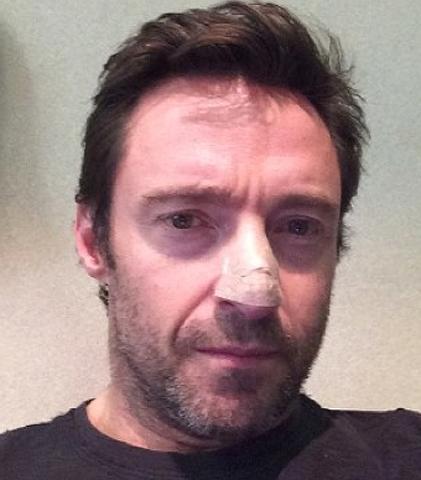
Local surgical treatment is typically curative, just a few “Snikt”s from a dermatologist’s scalpel. Adamantium, the indestructible metal that makes up Wolverine’s claws, is not required. Jackman admitted on Twitter that he underwent Mohs surgery. This procedure involves removing small amounts of tissue and then testing the specimen while the patient waits. Though time and labor intensive, the typical result is a smaller scar, important for any patient, not just a movie star. Jackman has since reported at least three more of these facial skin cancers, related to extensive sun exposure growing up in Australia.

Former Journey lead singer Steve Perry has been blessed with an amazing musical career, belting songs like the Glee-rific “Don’t Stop Believing” that celebrate optimism. In 2013, Perry disclosed a health scare: A lesion on his right cheek was biopsied and found to be melanoma skin cancer. Presumably, the melanoma was superficial. Perry reports that he underwent two surgeries and was told that no further treatment was necessary. He made no mention of lymph node biopsies, a good sign. When caught early and excised, the prognosis for melanoma may be excellent. He has every right to remain optimistic. Don’t Stop Believing…and for the rest of you, Don’t Stop Sunscreening.
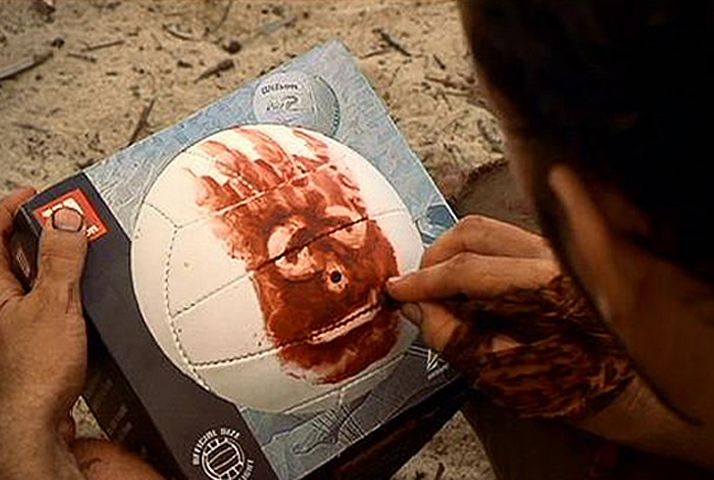
If skin cancer doesn't scare you toward sun protection, then consider the cautionary tale of Wilson the Volleyball, Tom Hanks' co-star in "Cast Away." Wilson is a pale white volleyball, and so represents the skin type most vulnerable to ultraviolet radiation. His face, scrawled in red blood, is the color of acute sun burn. Finally, his texture is the consistency of weathered chronically damaged skin: leather. Unlike Wilson, don't become red-faced, leathery volleyballs. Instead, later up with sunscreen of at least SPF 15, use wide-brimmed hats , and avoid the sun from 10 AM until 2 PM.

No, you don't have to adjust your computer screen. And you can stop scrutinizing each pixel to find some skin defect on the face of Oscar winner Emma Stone. In fact, her lack of lesions, wrinkles, even significant facial color is the point. For years, movie stars and the cohorts of their generation have worshiped the sun, attempting to achieve the so-called "healthy tan." It is clear, however, that for this "worship," the sun is a false God. Imagine our delight when attractive stars do not hide their fair skin. These cutaneous rebels are not considered freakish or deformed. Stone is pale, Gosh bless her, and will be rewarded with younger appearing skin for years to come.
Next »
« Back




